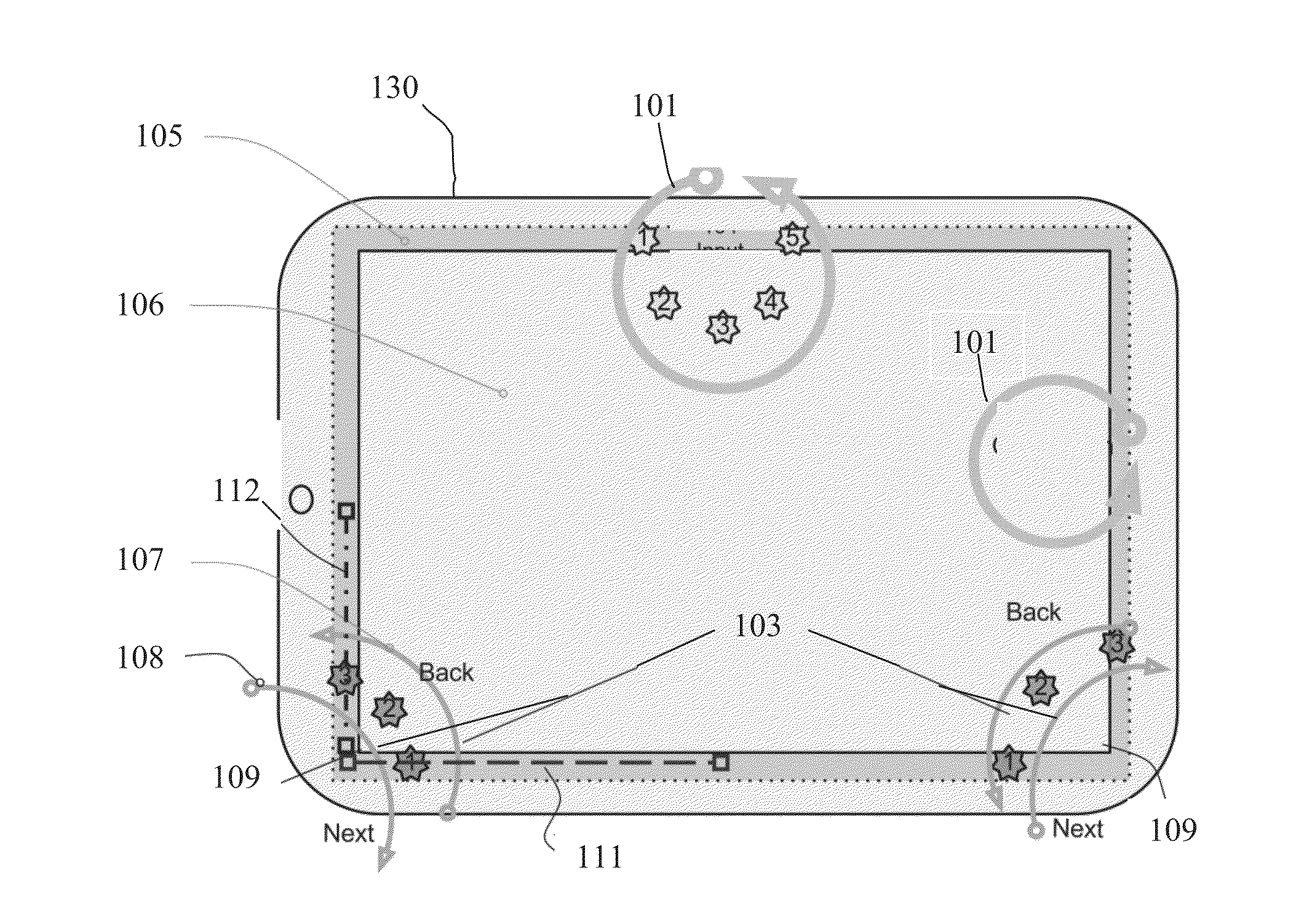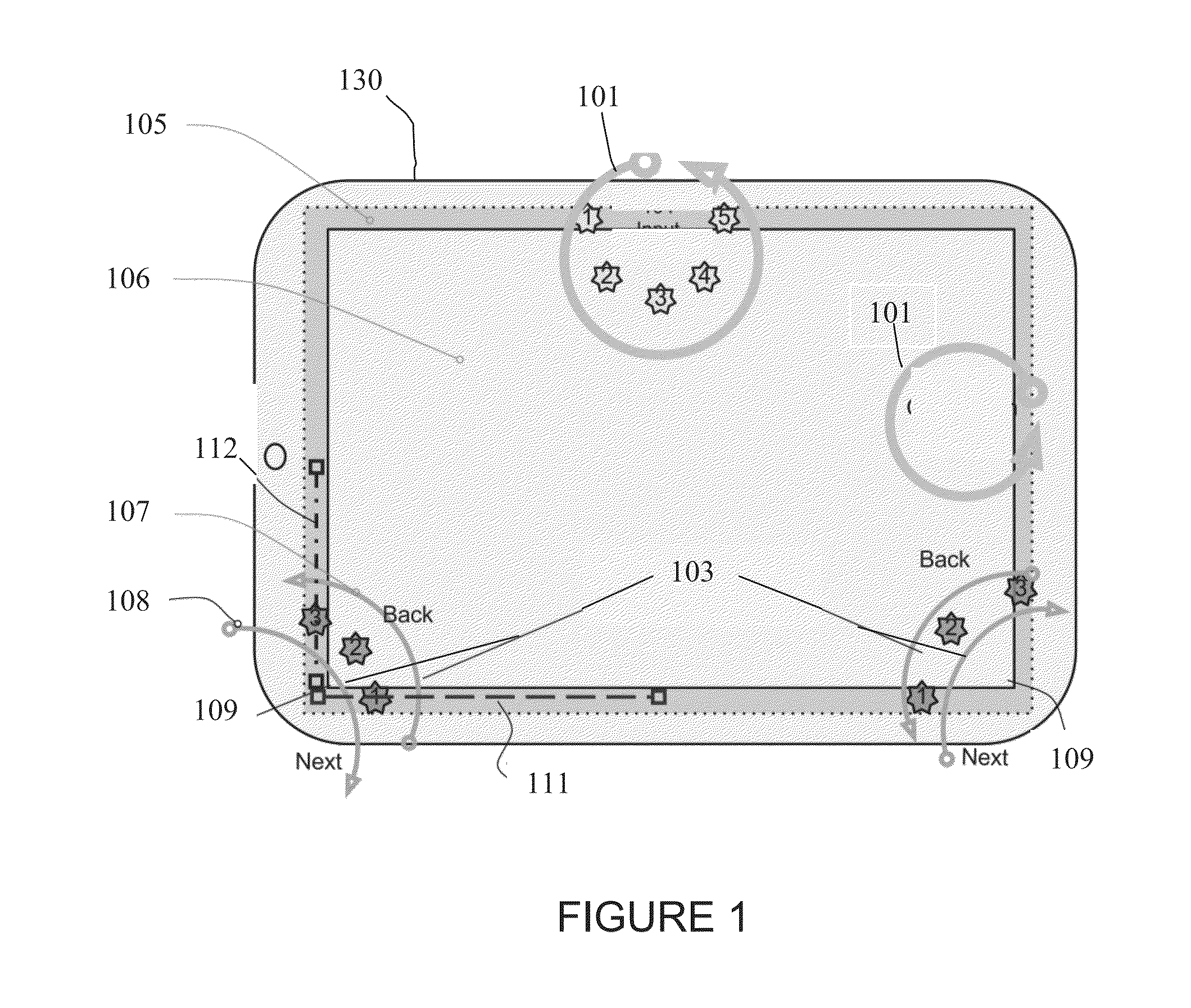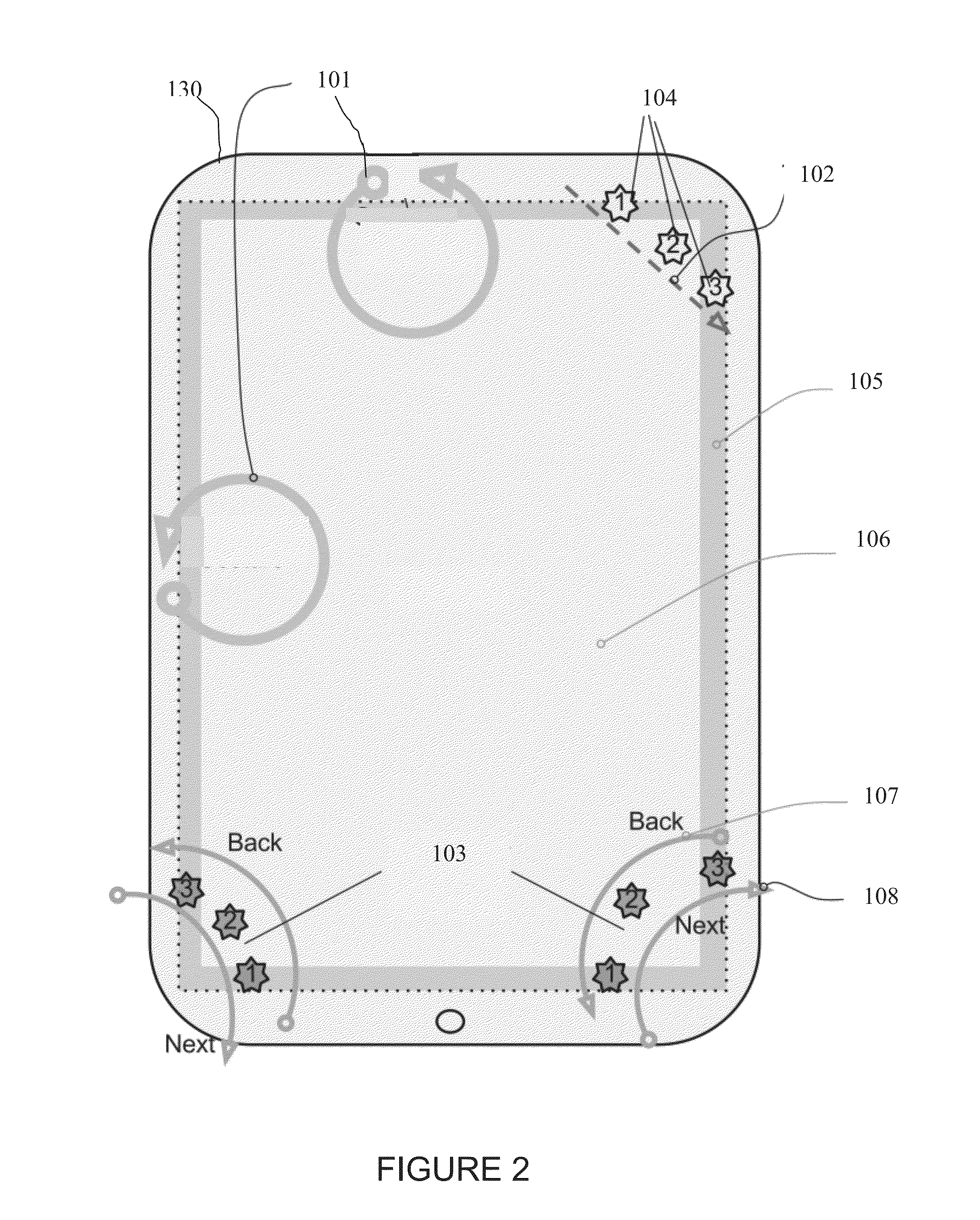System and method for detecting and interpreting on and off-screen gestures
a gesture detection and gesture technology, applied in the field of mobile device operation, can solve the problems of not being able to sense how hard one is touching, mouse systems that do not allow a suitably intuitive, rapid, accurate interaction by the user, and needing to press down, so as to improve the experience of a user
- Summary
- Abstract
- Description
- Claims
- Application Information
AI Technical Summary
Benefits of technology
Problems solved by technology
Method used
Image
Examples
Embodiment Construction
[0034]FIG. 1 illustrates a device 130, depicted in a landscape mode, according to the present invention. During investigation into ways to improves touch and pen accuracy along the edges of the active display area 106 where the touch accuracy is significant lower compared to the center of the active display area 106, it was determined that the best way to accomplish this is to extend the touch / pen input sensor beyond the outer limits of the display 106. The present invention thus creates an extra touch and / or stylus sensor band 105 around the active display 106 as shown in FIG. 1.
[0035]Although the extra sensor band or off-screen input area 105 does not determine touch locations as accurately as the sensors located in the center of the active display are 106, off-screen input area 105 is fully capable of supporting the edge gesture detection described herein. In the preferred embodiment, the off-screen gestures described herein require the detection of at least one input within the ...
PUM
 Login to View More
Login to View More Abstract
Description
Claims
Application Information
 Login to View More
Login to View More - R&D
- Intellectual Property
- Life Sciences
- Materials
- Tech Scout
- Unparalleled Data Quality
- Higher Quality Content
- 60% Fewer Hallucinations
Browse by: Latest US Patents, China's latest patents, Technical Efficacy Thesaurus, Application Domain, Technology Topic, Popular Technical Reports.
© 2025 PatSnap. All rights reserved.Legal|Privacy policy|Modern Slavery Act Transparency Statement|Sitemap|About US| Contact US: help@patsnap.com



